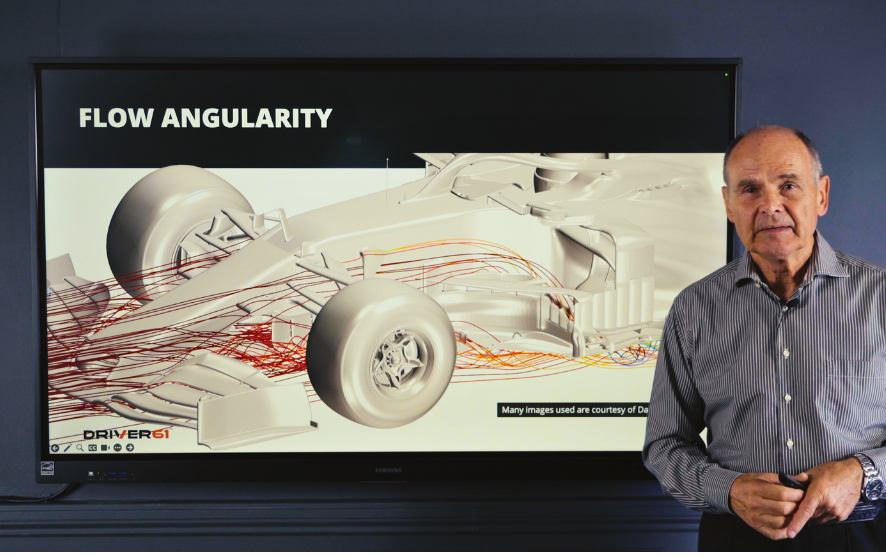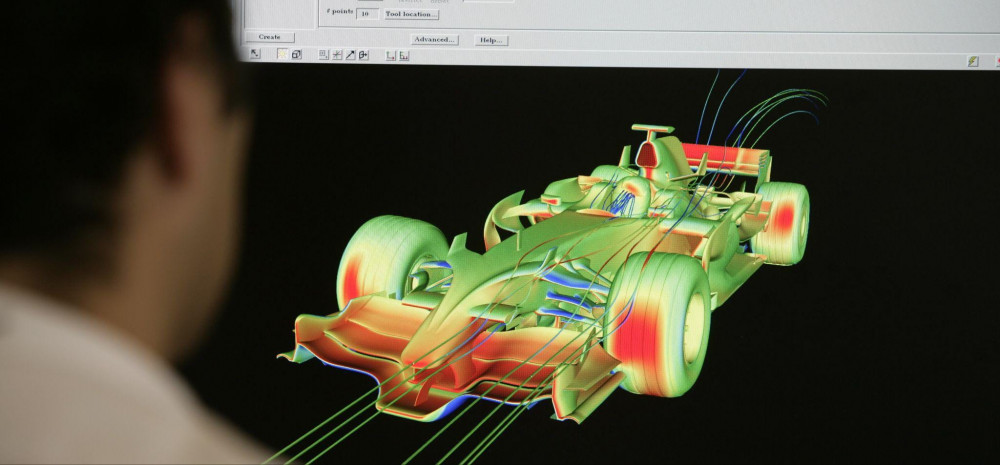"I remember calling my mom and saying, 'Okay mom, I found out what I want to be as a grown-up. I want to be in a place that they pay me to develop my tyre model.'" This moment of clarity from Marta De Pfaff, a tyre performance engineer now working with Honda in World Superbikes, reveals just how specialised and crucial tyre engineering has become in modern motorsport.
Having spent years analysing the technical side of racing, I've always been fascinated by the hidden heroes of the paddock – the engineers who can make the difference between pole position and midfield obscurity. Among these specialists, tyre engineers occupy perhaps the most crucial role, especially in categories where margins are measured in thousandths of a second.
See the full in depth interview below on youtube or wherever you get your podcasts.
The Strategic Sideways Move: Formula E Before MotoGP
What's most striking about Marta's career path is her strategic approach. Despite having her heart set on motorcycles from the beginning, she made the calculated decision to gain experience in Formula E first, even turning down an initial offer from Honda's World Superbike team.
"If they call you from a Moto GP team would you go?" And I said, "No I wouldn't because now it's my time to learn, not to achieve my dream." Marta explains.
This approach is something I've seen with the most successful engineers in F1 paddocks. Rather than rushing to their dream role, they build comprehensive experience that makes them genuinely valuable when they do arrive.
Marta's reasoning was crystal clear: "If I learned the technicals of car championships at world championship level, they are way more technologically advanced - I would say even 15-30 years ahead of motorcycles."
Her career progression speaks volumes about this strategy:
- Industrial engineering degree in Spain
- Oxford Brookes MSc in Motorsport Engineering
- BSB (British Superbike) with Ducati
- Idiada testing facility in Spain as an electric vehicle expert
- Moto2 team (Stop and Go) on weekends while at Idiada
- Formula E with Neo 333 as their first tyre engineer
- Jaguar Formula E (winning the championship)
- Honda World Superbikes

Honda World Superbike
The Tyre Engineer's Race Weekend: Technical Breakdown
So what exactly does a tyre performance engineer do? In Formula E, where Marta worked before moving to Honda, the job is incredibly technical and data-focused.
"My job is to understand the tyres theoretically and try to get the maximum performance," Marta explains. "There's a small range of optimal performance and what you want is to achieve that all the time - in qualifying, in racing, all the time."
For context, in a series like Formula E, the difference between P1 and P10 in qualifying can often be less than three-tenths of a second. This makes the tyre engineer's role absolutely critical.
A typical race week breaks down into several distinct phases:
1. Pre-event preparation
"The week before the race we do all the pre-event preparation – simulator day with both drivers, pre-events report, running all the simulations to understand what to expect from that specific track."
This matters tremendously, especially with new circuits where historical data doesn't exist.
2. Track walk and surface analysis
"The track walk is a very important bit for me. To be honest, it's one of the most important bits because to understand how the tyre is going to behave, you need to understand how it's going to interact with the track surface."
This involves sophisticated equipment:
- Surface scanners and cameras
- Grip measurement devices
- GPS tools
- Various other analysis gadgets
The importance of this step cannot be overstated, particularly on street circuits where different sections of the track might have completely different surface characteristics.
"London track is the perfect example," Marta notes. "You have the indoor site with a very sandpaper type of surface, and then you go outside to the harbour side with normal street tarmac. That's very tricky for understanding how the tyres will work."
These surface variations drastically affect tyre temperature, grip levels, and degradation rates.
3. Practice sessions and strategy development
After free practice sessions, the real work begins: "We run simulations with real laps data, then start talking with the drivers and race engineers about potential strategies for qualifying."
For Marta, qualifying was the culmination of her most critical work. "For me, the weekend ended after qualifying. That's when you've put together the strategies with the drivers, and managed all the tyre preparation."
4. Tyre management in the garage
Formula E presents unique challenges for tyre engineers because teams don't have many tools at their disposal:
- No tyre warmers
- No artificial cooling systems
- Just basic covers that retain some heat
"One driver would tell me they want the tyres like this, the other would want them like that. So I had to manage different approaches for each car."
Without the sophisticated tyre management equipment available in F1, the engineer's expertise becomes even more crucial. It's about finding creative, rule-compliant solutions to prepare tyres for the exact temperature window they need.
The Importance of Mentorship in Motorsport Careers
Perhaps the most insightful aspect of Marta's journey is her emphasis on mentorship. In racing, raw talent and qualifications only get you so far – the guidance of experienced hands makes all the difference.
"I've been very lucky with all the mentors I had. All my bosses have given me something to make me better," she reflects.
This mentorship actually drove some of her career decisions: "When I moved to Jaguar, I met the senior tyre engineer there and thought, 'I want to work with him. I literally need someone in my life to teach me everything they know about tyre engineering.'"
I see this time and again in F1. The engineers who seek out strong mentors tend to progress more rapidly than those who chase titles or the prestige of working with a specific team.
Tools of the Trade: MATLAB and Technical Analysis
When I ask what software tools tyre engineers rely on, Marta doesn't hesitate: "MATLAB is your best friend."
For those unfamiliar, MATLAB is a programming platform specifically designed for engineers and scientists. As Marta describes it: "It's the most expensive calculator in the market."
"One of the things I learned in university is that it doesn't matter which coding language you use – Python, Julia, MATLAB – what matters is understanding how the machine thinks. Once you understand that, the specific code can always be found on Google."

Matlab
This highlights a crucial point: motorsport engineering is increasingly about data interpretation and coding skills. Gone are the days when mechanical knowledge alone was sufficient. Today's engineers need to be equally comfortable with programming, simulation, and data analysis.
Tyre engineers specifically need to:
- Analyse real-time temperature data from sensors
- Build correlation models between simulator data and real-world performance
- Develop predictive models for how tyres will behave in different conditions
- Translate complex datasets into actionable recommendations for drivers
On race weekends, this means rapid analysis of practice session data, correlating it with the pre-event simulations, and making quick decisions that could determine grid position.
The Challenge-Reward Balance of Motorsport Careers
The lifestyle demands of motorsport are substantial. "Last year I spent 33 weeks away, and the year has 52. That's a lot," Marta acknowledges.
This travel schedule makes personal stability challenging: "I got frustrated because I don't have time to settle down. I cannot settle down."
But the rewards are equally significant: "You're always challenged. It's not a job where you get bored, because there are always things to improve. You get this adrenaline, you keep changing tracks, so every environment is different."
The team environment provides another crucial benefit: "Everyone there is very passionate about motorsport. You surround yourself with people with the same passions, and you end up making friends that feel like family because you spend so much time with them."
This matches my own experience in racing. The paddock becomes a second home, and team members often feel closer than friends you've known for decades. The shared intensity of race weekends creates bonds that transcend typical work relationships.
Lessons for Aspiring Motorsport Engineers
Reflecting on Marta's journey from Spanish industrial engineering student to Honda World Superbikes tyre engineer, several key lessons emerge:
- Follow passion but be strategic Rather than taking the direct route to her dream job, Marta strategically built experience that would make her more valuable in that role later.
- Choose learning over titles "It wasn't my time to be in the big leagues with motorcycles. It was my time to learn," she explains about turning down Honda initially.
- Seek strong mentors Her move to Jaguar was specifically to work with and learn from their senior tyre engineer.
- Develop transferable technical skills The foundation in data analysis and programming languages provided flexibility across different racing categories.
- Be willing to make sacrifices Working two jobs simultaneously (Idiada during the week, Moto2 on race weekends) demonstrated her commitment.
The tyre engineer's role exemplifies how specialized and technical modern motorsport has become. It's no longer enough to have a good mechanical understanding – today's engineers need to be equally skilled in data science, programming, and real-time analysis.
For anyone aspiring to break into motorsport, Marta's path shows that patience and strategic decision-making often trump direct approaches. Sometimes the fastest route to your destination involves taking what appears to be a detour – gaining the comprehensive experience that makes you truly valuable when you finally arrive at your dream position.
And as in racing itself, timing is everything. As Marta puts it: "Take every single opportunity that you have in your life, literally, because you never know where it might lead."




